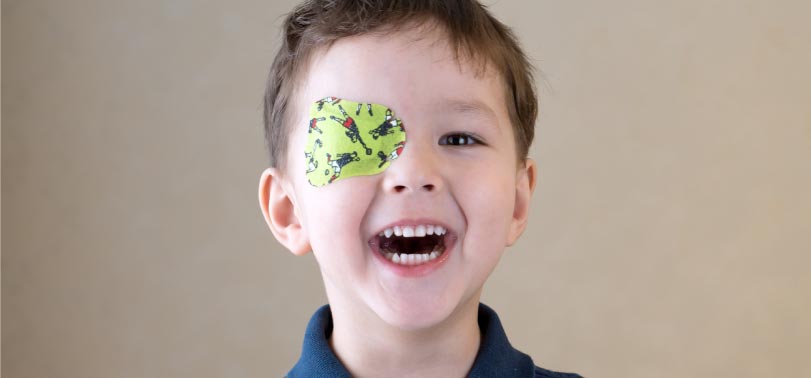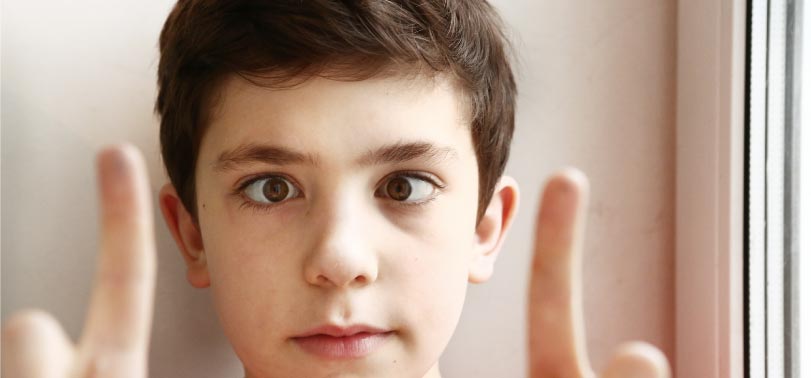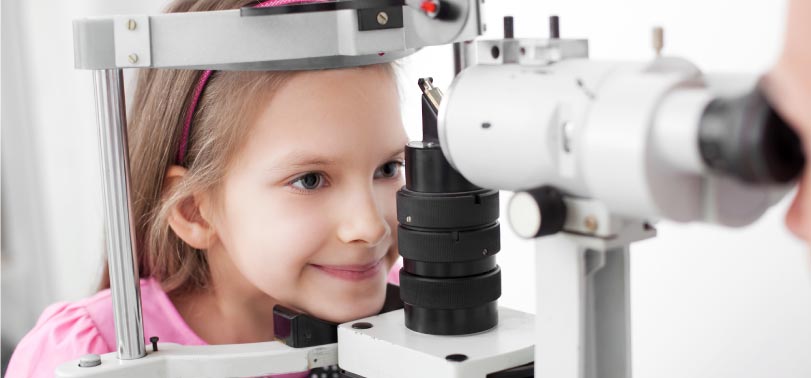


Amblyopia (Lazy Eyes)
Amblyopia means decreased visual acuity due to underdeveloped visual pathway; the nerve connection to your brain. However, the eye structure is normal and healthy. For a person to see well, healthy eyes and healthy visual pathway are required. The cause of the underdeveloped visual pathway could be due to uncorrected refractive error, squint or untreated ocular disease, e.g. cataract.
In general, all these conditions develop during childhood and it may not be treated effectively in children aged more than 7 years old. Therefore, an eye check-up ideally should be done at the age of 4-5 years old in all normal children. Children who wear glasses should have scheduled eye examinations yearly.
Signs and Symptoms
- Complains of eye strain or headache
- Complains of blurred vision
- Hold objects very close to the eyes
- Sitting close to the TV
- Tendency to bump into objects or furniture on one side
- Constant or intermittent squint (misalignment of the eye)
- Abnormal head posture or face turn when focusing
- Rubs the eye often
- Frequent blinking of the eye
- Family history of poor vision during childhood
- Poor performance in school – parents or guardians should bring in children with poor performance in school to have their vision checked to exclude ocular causes of such condition
Treatment/Management
- Correction of significant refractive errors through glasses or contact lens
- Prism training and vision therapy
- Occlusion/eye patching – the good normal eye will be patched to encourage the usage and activate the affected eye.



Strabismus (Squint)
Strabismus, also known as squint is any misalignment of the eyes. The eye may deviate or turn inwards (esotropia), outward (exotropia), upward (hypertropia) or downward (hypotropia). The deviation can either be constant or intermittent.
Signs and Symptoms
- Crossed eyes
- Complains of eye strain or headache
- Complains of double or blurred vision
- Hold objects very close to the eyes
- Sitting close to the TV
- Show signs of uncoordinated eye movements, especially at the end of the day.
- Tendency to bump into objects or furniture on one side
- Abnormal head posture or face turn when focusing
- Rubs the eye often
- Frequent blinking of the eye
Risk Factors
- Uncorrected significant refractive error
- Family history of squint and visual problems since childhood
- Ocular trauma or injury
- Neurological problems
- Uncontrolled systemic disease (diabetes, hypertension)
- Others – Down syndrome, cerebral palsy, stroke etc.
Treatment/Management
The treatment options for strabismus aim to improve the alignment of the eyes and resolve amblyopia are as follows:
- Correction of significant refractive errors through glasses or contact lens
- Prism training and vision therapy
- Occlusion/eye patching – the good normal eye will be patched to encourage the usage and activate the affected eye
- Combination of optical corrections, visual therapy and patching
- Squint eye surgery



Paediatric Cataract
Cataract refers to opacity in the lens of the eyes and it can occur in the paediatric age group. This condition is often curable where early detection and intervention are crucial for a good visual outcome, especially in newborns.
Untreated cataracts in children lead to tremendous social, economic, and emotional burdens to the child, family, and society.
Signs and Symptoms
- Poor vision – difficulty recognising and following objects or people with their eyes
- Poor eye contact
- Nystagmus – rapid uncontrolled eye movements
- Squint eyes
- A white appearance on the centre of the visible eye – can also be a sign of other serious conditions, such as retinoblastoma. The child should be checked by an eye doctor immediately.
Causes
- Congenital or inherited tendencies
- Eye injury (ocular trauma)
Treatment/Management



Retinoblastoma
Retinoblastoma is a cancer of the eye that arises from the retina. It is the most common primary, intraocular malignancy of childhood and accounts for about 3 % of all childhood cancers. If left untreated, the tumour can grow, spread to other parts of the body such as the brain and even can cause fatality.
Signs and Symptoms
- Leukocoria (white pupillary reflex) – white appearance on the centre of the eye
- Strabismus (squint)
Treatment/Management
Generally, retinoblastoma can be cured. The chances of survival are much higher if the tumour has not spread outside the eye. In treating retinoblastoma, more than one or a combination of treatments may be used depending on its stages. Retinoblastoma treatment approaches and goals are as follows:
- To eradicate the cancer cells and save the child’s life
- To save the eye if possible
- To preserve as much vision as possible
- To limit the possibilities of side effects later in life that can be caused by treatment.
Treatment options:
- Chemotherapy
- Radiation therapy
- Enucleation (removing the eye)
Book Now
Book Your Appointment
Working Hours:
8:30am – 5:30pm (Monday – Saturday)
Contact Us:
9,10,11, Residensi Park Bukit Jalil, Persiaran Jalil Utama, 57000, Bukit Jalil, Kuala Lumpur

